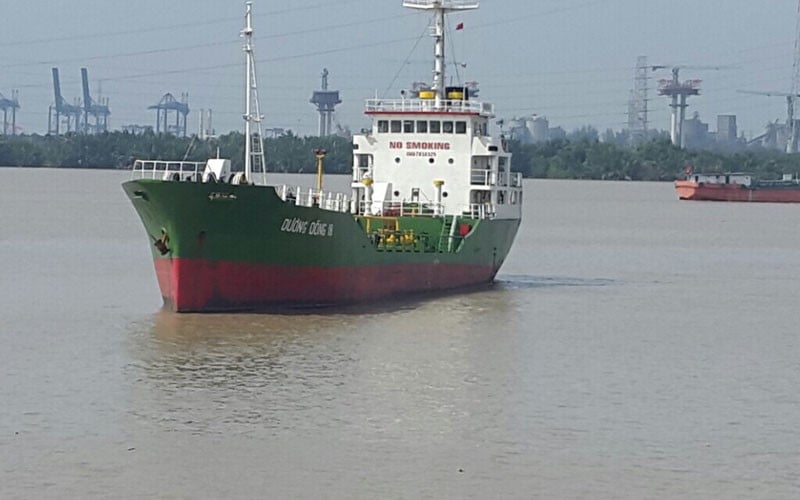A notable point in the Decree is that there are separate regulations for those participating in transporting dangerous goods.
In particular, for those participating in transporting dangerous goods on inland waterway vehicles, regulations require crew members and drivers of inland waterway vehicles working on the vehicles to be trained and have special professional certificates on transporting dangerous goods according to regulations of the Minister of Transport.

Crew members and drivers of inland waterway vehicles working on the vehicles must be trained and have special professional certificates in transporting dangerous goods (Illustration photo).
At the same time, be trained and granted a certificate of completion of the dangerous goods safety training program as prescribed.
Escorts, warehouse keepers, and people loading and unloading dangerous goods on vehicles and at ports and inland waterways must be trained and granted a certificate of completion of the dangerous goods safety training program that they escort, load, unload, or store.
Vehicles transporting dangerous goods must also meet the conditions for participation in traffic according to the provisions of law. In particular, the vehicle must have a dangerous goods logo. If a vehicle has many different types of dangerous goods, the vehicle must have enough logos for those types of goods. The logos are affixed on both sides of the vehicle.
After unloading all dangerous goods, if the transport of such goods is not continued, the means of transport must be cleaned and the danger symbol on the vehicle must be removed or erased.
The transport unit, crew or driver of an inland waterway vehicle is responsible for cleaning and removing or erasing the danger symbol on the vehicle when it no longer transports that type of dangerous goods.
In addition, for loading and unloading dangerous goods on vehicles and storing them in warehouses, the person loading and unloading dangerous goods must comply with regulations on loading goods on inland waterway vehicles.
Specifically, the loading and unloading of dangerous goods must be directly guided and supervised by the warehouse keeper, the charterer or the escort. The captain decides on the arrangement of dangerous goods on the vehicle and the padding and lashing appropriate to the nature of each type and group of dangerous goods. Do not load together types of goods that can interact with each other, increasing the level of danger in the same compartment or cargo hold of the vehicle.
In case the transportation of dangerous goods does not require an escort, the carrier must load and unload the goods according to the instructions of the charterer.
For types and groups of dangerous goods that are required to be loaded, unloaded and stored in separate places, loading and unloading must be carried out in separate wharf, port or warehouse areas.
After removing all dangerous goods from the warehouse or yard, the storage area for dangerous goods must be cleaned so as not to affect other goods.
Source



![[Photo] President Luong Cuong attends the inauguration of the international container port in Hai Phong](https://vphoto.vietnam.vn/thumb/1200x675/vietnam/resource/IMAGE/2025/5/13/9544c01a03e241fdadb6f9708e1c0b65)
![[Photo] Prime Minister Pham Minh Chinh receives Ambassador of the French Republic to Vietnam Olivier Brochet](https://vphoto.vietnam.vn/thumb/1200x675/vietnam/resource/IMAGE/2025/5/13/f5441496fa4a456abf47c8c747d2fe92)
![[Photo] Many people in Hanoi welcome Buddha's relics to Quan Su Pagoda](https://vphoto.vietnam.vn/thumb/1200x675/vietnam/resource/IMAGE/2025/5/13/3e93a7303e1d4d98b6a65e64be57e870)
![[Photo] President Luong Cuong awarded the title "Heroic City" to Hai Phong city](https://vphoto.vietnam.vn/thumb/1200x675/vietnam/resource/IMAGE/2025/5/13/d1921aa358994c0f97435a490b3d5065)





























































































Comment (0)